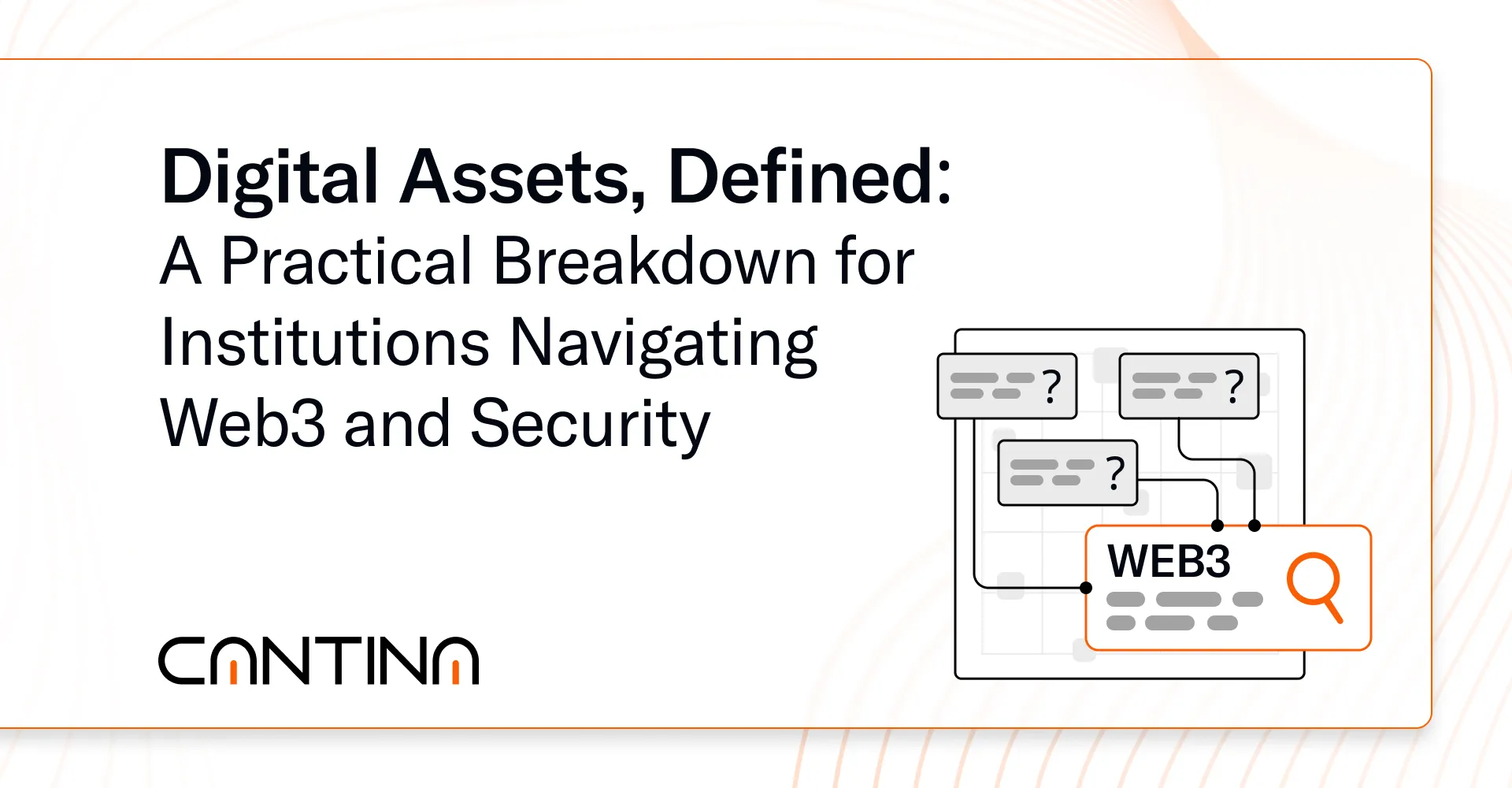The Language of Web3 Infrastructure
As institutions and TradFi firms explore Web3, language can become a barrier. The digital asset ecosystem comes with its own technical vocabulary, often unfamiliar even to experienced financial professionals.
We prepared some core definitions describing key terms used across decentralized infrastructure, digital assets, and security. Use this as a reference when reviewing protocols, planning integrations, or evaluating partners. Let’s dive in.
Blockchain
A public database distributed across many computers. Used to store transactions transparently and securely.
Smart Contract
Code deployed on a blockchain that executes automatically. Controls logic for digital asset systems like trading or lending.
Protocol
A system built on smart contracts that provides functionality like exchanges, lending, or governance.
Digital Asset
A blockchain-based representation of value, such as tokens or stablecoins, that can be transferred and held directly.
Wallet
A tool for managing private keys and interacting with digital assets. Can be software-based or hardware-secured.
Private Key
A secret cryptographic string used to access and control digital assets. If lost or stolen, access is permanently compromised.
Public Key
A cryptographic address derived from a private key. Used to receive assets and verify ownership.
Security Review
A structured analysis of smart contract logic, system architecture, and operational risks. Conducted to identify vulnerabilities.
Audit
A specific type of security review that includes testing, manual review, and system hardening recommendations.
Governance
The mechanism by which changes to a protocol are proposed and enacted. Often conducted through token voting or multisignature approval.
Multisig (Multisignature Wallet)
A wallet that requires multiple parties to approve a transaction. Used for secure control of treasury and upgrades.
Key Custody
The practice of managing and securing private keys. Critical for institutional asset protection.
Timelock
A delay mechanism for protocol upgrades or transactions. Allows public review before changes take effect.
Composability
The ability of protocols to interact with one another. Creates new capabilities but introduces dependency risk.
Rug Pull
A malicious act where a protocol's creators withdraw liquidity or disable functionality, typically resulting in asset loss.
Oracle
A service that provides external data (like prices) to smart contracts. Can be a security risk if manipulated.
Attack Surface
All the ways a system can be compromised. Includes smart contracts, APIs, dashboards, and cloud infrastructure.
DeFi (Decentralized Finance)
Financial services built on public blockchains using smart contracts, without intermediaries.
KYC / AML
Know Your Customer and Anti-Money Laundering requirements. Regulatory standards that apply depending on jurisdiction and protocol structure.
Permissionless
A system where anyone can participate without needing approval. Common in Web3 protocols.
Custodian
An entity or service that holds and secures digital assets on behalf of clients, often required for compliance in institutional finance.
Cold Storage
Offline storage of private keys. Provides strong protection against remote attacks.
Hot Wallet
An internet-connected wallet used for active transactions. Carries greater exposure to attack.
Node
A computer that participates in the blockchain network. Maintains and verifies records.
Mainnet
The live version of a blockchain network, as opposed to test environments.
Testnet
A sandbox environment for testing protocols before deployment on mainnet.
Fork
A change to blockchain code that can split the network into two versions. Used for upgrades or responses to incidents.
Gas Fee
A transaction fee paid to validators who maintain the blockchain. Varies based on network activity.
Closing Thoughts
If you are preparing to assess your posture across smart contract systems, interfaces, or governance structures, connect with Cantina to evaluate your current standing and identify actionable improvements aligned with industry standards.




